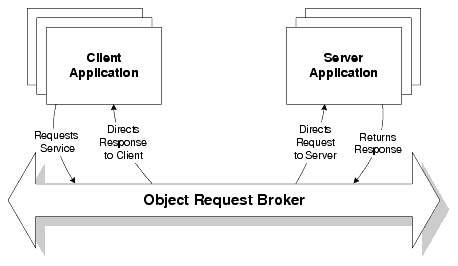Common Object Request Broker Architecture (CORBA) is an architecture and specification for creating, distributing, and managing distributed program objects in a network. It allows programs at different locations and developed by different vendors to communicate in a network through an "interface broker." CORBA was developed by a consortium of vendors through the Object Management Group (OMG), which currently includes over 500 member companies. Both International Organization for Standardization (ISO) and X/Open have sanctioned CORBA as the standard architecture for distributed objects (which are also known as components). CORBA 3 is the latest level.

The essential concept in CORBA is the Object Request Broker (ORB). ORB support in a network of clients and servers on different computers means that a client program (which may itself be an object) can request services from a server program or object without having to understand where the server is in a distributed network or what the interface to the server program looks like. To make requests or return replies between the ORBs, programs use the General Inter-ORB Protocol (GIOP) and, for the Internet, its Internet Inter-ORB Protocol (IIOP). IIOP maps GIOP requests and replies to the Internet's Transmission Control Protocol (TCP) layer in each computer.
A notable hold-out from CORBA is Microsoft, which has its own distributed object architecture, the Distributed Component Object Model (DCOM). However, CORBA and Microsoft have agreed on a gateway approach so that a client object developed with the Component Object Model will be able to communicate with a CORBA server (and vice versa).
Distributed Computing Environment (DCE), a distributed programming architecture that preceded the trend toward object-oriented programming and CORBA, is currently used by a number of large companies. DCE will perhaps continue to exist along with CORBA and there will be "bridges" between the two.